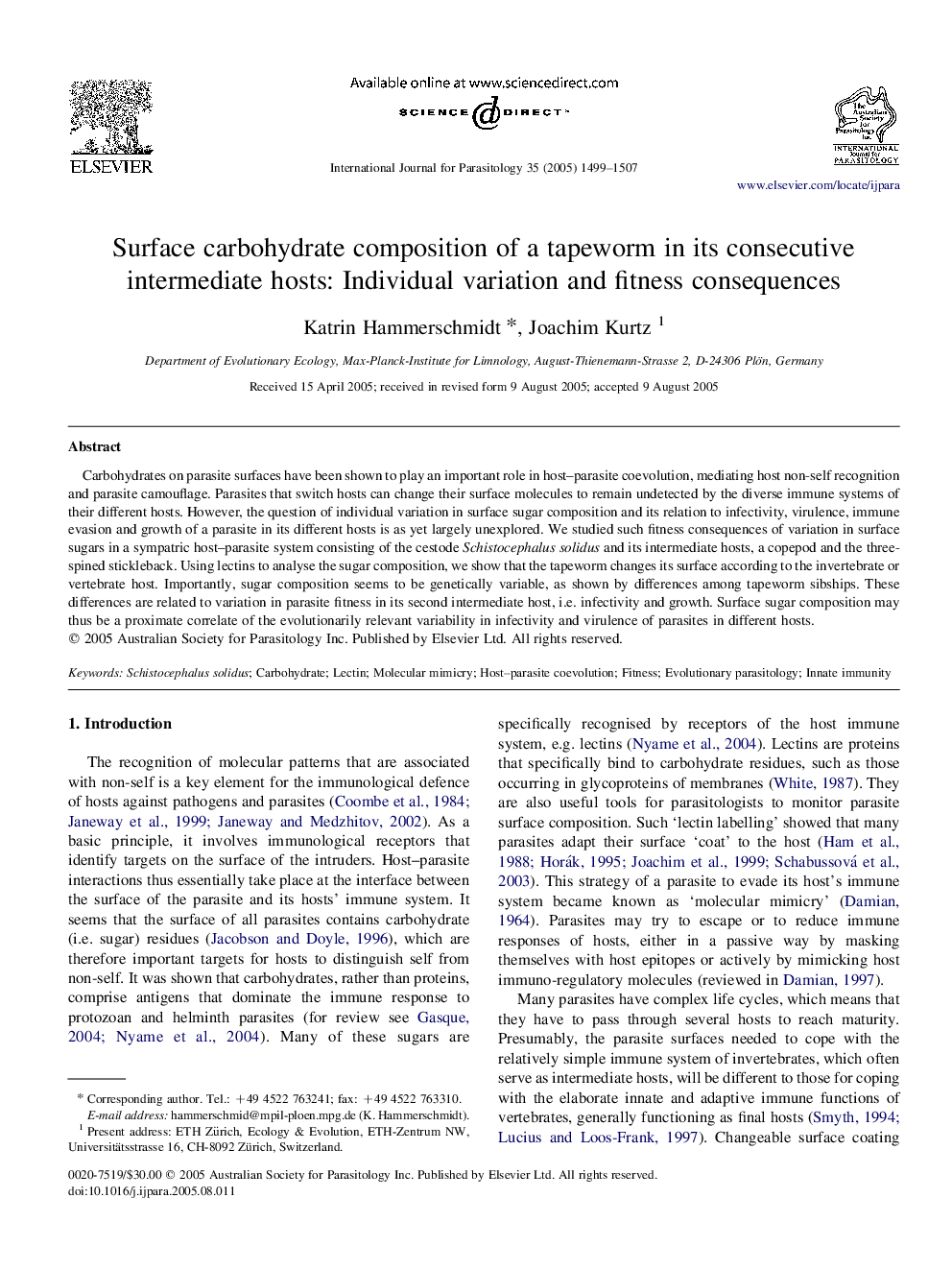| Article ID | Journal | Published Year | Pages | File Type |
|---|---|---|---|---|
| 8979966 | International Journal for Parasitology | 2005 | 9 Pages |
Abstract
Carbohydrates on parasite surfaces have been shown to play an important role in host-parasite coevolution, mediating host non-self recognition and parasite camouflage. Parasites that switch hosts can change their surface molecules to remain undetected by the diverse immune systems of their different hosts. However, the question of individual variation in surface sugar composition and its relation to infectivity, virulence, immune evasion and growth of a parasite in its different hosts is as yet largely unexplored. We studied such fitness consequences of variation in surface sugars in a sympatric host-parasite system consisting of the cestode Schistocephalus solidus and its intermediate hosts, a copepod and the three-spined stickleback. Using lectins to analyse the sugar composition, we show that the tapeworm changes its surface according to the invertebrate or vertebrate host. Importantly, sugar composition seems to be genetically variable, as shown by differences among tapeworm sibships. These differences are related to variation in parasite fitness in its second intermediate host, i.e. infectivity and growth. Surface sugar composition may thus be a proximate correlate of the evolutionarily relevant variability in infectivity and virulence of parasites in different hosts.
Keywords
Related Topics
Life Sciences
Immunology and Microbiology
Parasitology
Authors
Katrin Hammerschmidt, Joachim Kurtz,
